Christa: I’m sure I read other books/comics this month, but the one at the forefront of my mind is The 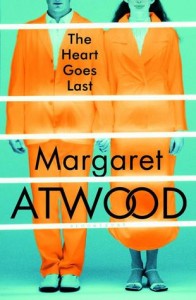 Heart Goes Last—the latest novel from literary giant Margaret Atwood. Like The Handmaid’s Tale and the MaddAddam Trilogy, The Heart Goes Last takes place in the future. But not quite as far into the future as her other books. I don’t think it’s her strongest novel, but it’s filled with Atwood’s classic dark humour, and I was deeply intrigued by the story and the lengths the character’s would go to just for some economic security and a semblance of safety and routine. If you’re a long time Atwood fan (like me!) you’ll definitely want to pick this one up. In addition to that I’ve started Erin Bow’s The Scorpion Rules and Joelle Jones and Jamie S. Rich’s Lady Killer—both of which are amazing. I’m on a roll.
Heart Goes Last—the latest novel from literary giant Margaret Atwood. Like The Handmaid’s Tale and the MaddAddam Trilogy, The Heart Goes Last takes place in the future. But not quite as far into the future as her other books. I don’t think it’s her strongest novel, but it’s filled with Atwood’s classic dark humour, and I was deeply intrigued by the story and the lengths the character’s would go to just for some economic security and a semblance of safety and routine. If you’re a long time Atwood fan (like me!) you’ll definitely want to pick this one up. In addition to that I’ve started Erin Bow’s The Scorpion Rules and Joelle Jones and Jamie S. Rich’s Lady Killer—both of which are amazing. I’m on a roll.
Angel: I’ve got The Heart Goes Last on my list, and will hopefully get to it soon! I do think you’re going to absolutely LOVE The Scorpion Rules, Christa—I’m glad I hardly had any expectations for it because it just blew all those expectations away.
I just finished Amy Zhang’s novel This is Where the World Ends, out next March, and it was okay? I think? I thought she did some interesting things with the narrative, but I don’t know that I actually liked or enjoyed the story. This weekend, I set aside some time to read the Queers Destroy Horror issue of 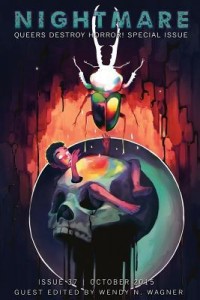 Nightmare Magazine, and it was amazing. Favourite piece is definitely Alyssa Wong’s “Hungry Daughters of Starving Mothers,” though I would recommend not eating just before or just after reading it.
Nightmare Magazine, and it was amazing. Favourite piece is definitely Alyssa Wong’s “Hungry Daughters of Starving Mothers,” though I would recommend not eating just before or just after reading it.
Hopefully, I’ll be finishing Walk on Earth a Stranger and The Unquiet this month, and I’d like to read more speculative fiction magazines too, so I’ll have to dig up some more issues. Recommendations are welcome!
Al Rosenberg: My day job has been intense. I’ve had less reading time recently than I ever have before. So, I’ve been catching up on podcasts and blogs. I picked up and put down several books that couldn’t keep my interest.
Anna Tschetter: I feel ashamed that while I love other Margaret Atwood books, I haven’t gotten to her newer books! I know I should rectify that soon, but in the meantime I just finished A History of Glitter and Blood by Hannah Moskowitz. It was strange, but I liked it. It’s a “history” of the wars between the gnomes who like to eat the fairies and the fairies who don’t appreciate that fact very much. If you’ve always suspected that fairy tales were more fractured than whole or appreciate an unreliable narrator I’d check it out.
I’m happily listening to Carry On, the “real” version of Cath’s Simon Snow fanfiction from Rainbow Rowell’s book Fangirl, on audio and enjoying it very much. It’s got gay wizards and, at least in the audio, a great narrator! To be honest, it’s the most fun I’ve had with a fantasy book in a while.
Ginnis Tonik: I recently went on a memoir kick with two books released in September: Fat Girl Walking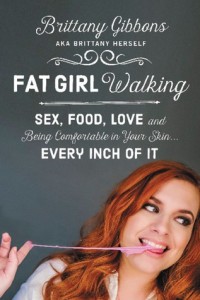 by Brittany Gibbons and Furiously Happy by Jenny Lawson. They both deal with body image and mental disorders, which is just my kind of stuff. I reviewed Fat Girl Walking for this month’s Dogears, and Furiously Happy is Jenny Lawson’s, also known as The Bloggess, second memoir. Furiously Happy is not quite as funny as the first one, but the way she talks about mental illness is more poignant—I loved the book for that.
by Brittany Gibbons and Furiously Happy by Jenny Lawson. They both deal with body image and mental disorders, which is just my kind of stuff. I reviewed Fat Girl Walking for this month’s Dogears, and Furiously Happy is Jenny Lawson’s, also known as The Bloggess, second memoir. Furiously Happy is not quite as funny as the first one, but the way she talks about mental illness is more poignant—I loved the book for that.
In between those, I have been working my way through the first book, Wine Folly: The Essential Guide to Wine, from my favorite wine blogger Madeline Puckette. Puckette is a graphic designer by trade, so the book is largely a visual way to learn about wine with stunning charts and sharp graphics, much like the website itself, but BETTER! This book is gorgeous and perfect for any wine fan who doesn’t want to read those dry as a French Malbec (wine geek humor, har!). And, I also read Volume 2 of Lumberjanes, which that comic just makes me so friggin happy. Oh, I also finished The Meaning of Wife: A Provocative Look at Women and Marriage in the Twentieth Century by Anne Kingston last month, and that was fascinating! I originally checked it out from the library, but found it so informative, I bought my own copy.
 Amanda Vail: My relaxation method of choice this past month was YA fantasy. (Well, to be honest, that’s the case more often than not.) After quite the wait on the library hold list, Leigh Bardugo’s Shadow and Bone made it into my eager hands. Russian-style fantasy isn’t the most common, and I was in the mood for a spirited female protagonist, so I had high hopes. While my hopes weren’t dashed, they were dampened. The protagonist is great and the magic system is interesting, but I just wish resolution of the plot didn’t revolve around her choosing one romantic interest or the other. I got peeved and tweeted about it, which netted me several other recommendations. Wendy pointed me toward The Raven Boys by Maggie Stiefvater, and thank goodness she did. I devoured that book in about two days. Stiefvater’s lyrical storytelling style and the deep place lore that surrounds her tale reminded me of my favorite Susan Cooper books from childhood. Basically, if you mashed together Emma Bull’s War for the Oaks with Cooper’s The Grey King, you’d more or less have The Raven Boys. Also, because I missed it way back when it first came out, I’ve started reading Skip Beat! thanks to a prompt from WWAC’s lovely article on the manga.
Amanda Vail: My relaxation method of choice this past month was YA fantasy. (Well, to be honest, that’s the case more often than not.) After quite the wait on the library hold list, Leigh Bardugo’s Shadow and Bone made it into my eager hands. Russian-style fantasy isn’t the most common, and I was in the mood for a spirited female protagonist, so I had high hopes. While my hopes weren’t dashed, they were dampened. The protagonist is great and the magic system is interesting, but I just wish resolution of the plot didn’t revolve around her choosing one romantic interest or the other. I got peeved and tweeted about it, which netted me several other recommendations. Wendy pointed me toward The Raven Boys by Maggie Stiefvater, and thank goodness she did. I devoured that book in about two days. Stiefvater’s lyrical storytelling style and the deep place lore that surrounds her tale reminded me of my favorite Susan Cooper books from childhood. Basically, if you mashed together Emma Bull’s War for the Oaks with Cooper’s The Grey King, you’d more or less have The Raven Boys. Also, because I missed it way back when it first came out, I’ve started reading Skip Beat! thanks to a prompt from WWAC’s lovely article on the manga.
Sarah Wolfypants: I’ve been having trouble getting into a new book since my Kindle died a tragic death (let us have a moment of silence). Since I normally read at night as a way to wind down for the day, I tried using my iPad as a replacement Kindle for a while, but it sucked. So I pulled out a real deadwood book and found my book light, and voilà! I’m back to speed reading like a champ.
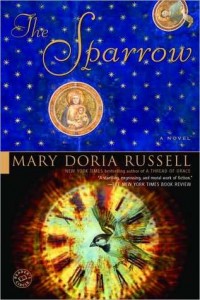 I just finished The Sparrow by Mary Doria Russell, and I think I’m emotionally scarred. There was this point about a third of the way through when I realized (highlight the following text to see spoilers) the people I had assumed were just background figures for the main characters were actually the members of the crew that I already knew were dead and oh god his HANDS. It also just pointed out what a good writer Russell is to seamlessly interweave several themes while jumping back and forth in time. I’m not normally a fan of flashback-nowtime-flashback narration, but she really used the flashbacks to further illuminate the unutterable cruelty of the priests’ questions. She is also amazing at making you care for the characters. The ending was a little flabby and heavy handed, but also perfect. Now I’m plowing through all my H.P. Lovecraft in preparation for a panel I’m on next month, and aaaaaaahhhhhhhhh. The racism just in the name of the cat in The Rats in the Walls. Ick. Like why, man, whyyyy? Oh, that’s right. You’re super racist. I did really like The Picture in the House, which felt like an elaborate dressing put on a “I accidentally walked into a serial killer’s house” story, and was tense and awkward and creepy. It’s kind of weird to have Lovecraft mythos mingling in my head with imagery from the hell dimension in the basement of Jirel of Joiry’s castle, but also fitting for October.
I just finished The Sparrow by Mary Doria Russell, and I think I’m emotionally scarred. There was this point about a third of the way through when I realized (highlight the following text to see spoilers) the people I had assumed were just background figures for the main characters were actually the members of the crew that I already knew were dead and oh god his HANDS. It also just pointed out what a good writer Russell is to seamlessly interweave several themes while jumping back and forth in time. I’m not normally a fan of flashback-nowtime-flashback narration, but she really used the flashbacks to further illuminate the unutterable cruelty of the priests’ questions. She is also amazing at making you care for the characters. The ending was a little flabby and heavy handed, but also perfect. Now I’m plowing through all my H.P. Lovecraft in preparation for a panel I’m on next month, and aaaaaaahhhhhhhhh. The racism just in the name of the cat in The Rats in the Walls. Ick. Like why, man, whyyyy? Oh, that’s right. You’re super racist. I did really like The Picture in the House, which felt like an elaborate dressing put on a “I accidentally walked into a serial killer’s house” story, and was tense and awkward and creepy. It’s kind of weird to have Lovecraft mythos mingling in my head with imagery from the hell dimension in the basement of Jirel of Joiry’s castle, but also fitting for October.
Megan: This month I finished two Holocaust stories, The Lady In Gold and The Book of Aron. The Lady In Gold is nonfiction, and inspiration for the many times nominated film Woman in Gold. Shockingly—ha ha, I know—the book is better than the movie. It spans more time, moving from Klimt’s early career to the aftermath of that contest portrait of Adele Bloch-Bauer, The Lady In Gold as the Austrians named her, was auctioned off. The movie focuses on the family’s 1990s to 2000s battle to regain the painting and isn’t shy about painting the characters as heroes and villains. The book is more detailed, less simplistic, and more interested in creating a synthesis of different historical threads: how did the Secessionist movement, of which Klimt was a founding member, come to be? How was it influenced by, and how did it in turn influence, the development of psychology and new fields of medicine? And of course, why was anti-semitism so strong in a country with such a small Jewish population? But then, it’s a book of narrative art history, not a star turn.
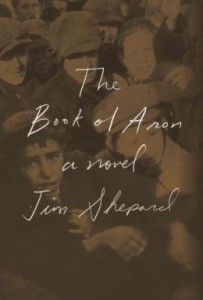 The Book of Aron is novel with a much more narrow focus. Our narrator is a young, poor, Polish Jewish boy, whose father movies the family from the country to Warsaw, in search of work. Soon after, the Germans invade and erect the Warsaw Ghetto, and Aron’s world just gets smaller and smaller, bleaker and bleaker, as the ghetto is shrunk and shrunk again, starved out, and then eventually cleared. But although Aron’s perspective allows us only a small view into life in the ghetto, The Book of Aron is just as concerned as The Lady In Gold is with asking questions and making connections. Through Aron we meet collaborators, resistance fighters, exhausted ordinary folk, and extraordinary people humiliated. Ultimately though, it’s a story about love and conviction and bravery, and about, as Hannah Arendt called it, the banality of evil in all its everyday, normalized meanness.
The Book of Aron is novel with a much more narrow focus. Our narrator is a young, poor, Polish Jewish boy, whose father movies the family from the country to Warsaw, in search of work. Soon after, the Germans invade and erect the Warsaw Ghetto, and Aron’s world just gets smaller and smaller, bleaker and bleaker, as the ghetto is shrunk and shrunk again, starved out, and then eventually cleared. But although Aron’s perspective allows us only a small view into life in the ghetto, The Book of Aron is just as concerned as The Lady In Gold is with asking questions and making connections. Through Aron we meet collaborators, resistance fighters, exhausted ordinary folk, and extraordinary people humiliated. Ultimately though, it’s a story about love and conviction and bravery, and about, as Hannah Arendt called it, the banality of evil in all its everyday, normalized meanness.
That is something both books dwelled on extensively—obviously—and something I’ve been consequently thinking about a lot these last few weeks: the sheer respectability of evil and the too-fast slide into social ruin. Again, as Arendt said, the Nazis were “ordinary people.”
After all that, I thought it was time for a break, so I’ve just started reading Patrick deWitt’s Undermajordomo Minor, and yes, it’s already got me in stitches.
Romona: I started a personal project this month (translating a 129-page book from Latvian to English), so for the most part my reading material has been confined to Latvian dictionaries. But, I did squeeze some other titles in. First I read Ed Piskor’s Hip Hop Family Tree, Volume One, which I really enjoyed. There was so much I didn’t know about the roots of Hip Hop; I’d say I was unaware of 90% of the information in this meticulously researched book, and I can’t wait to read the next volumes.
Following that, I’m in a book club that I’ve never actually attended. I always mean to go to the meetings,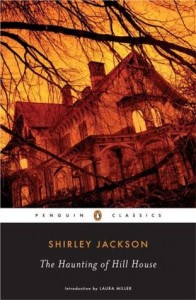 but they always choose the worst titles. Luckily, I’m writing under a pseudonym and none of them are likely to ever see this post. The titles the group previously selected were possibly good, but were far too dry for me to make it through. Over the summer months, they chose The Book of Strange New Things by Michel Faber, The Soul of Viktor Tronko by David Quammen, and Serena by Ron Rash. I did not complete any of those books and skipped each meeting. But this month they chose Daphne du Maurier’s Rebecca, and it was so beautiful. It sucked me in from the very first sentence. It was mournful, suspenseful, and bittersweet. I had already seen the movie and knew how it ended, but even with that said it had me reading to two AM to see what happened next. And I just started reading The Haunting of Hill House by Shirley Jackson, which has completely sunk its teeth into me.
but they always choose the worst titles. Luckily, I’m writing under a pseudonym and none of them are likely to ever see this post. The titles the group previously selected were possibly good, but were far too dry for me to make it through. Over the summer months, they chose The Book of Strange New Things by Michel Faber, The Soul of Viktor Tronko by David Quammen, and Serena by Ron Rash. I did not complete any of those books and skipped each meeting. But this month they chose Daphne du Maurier’s Rebecca, and it was so beautiful. It sucked me in from the very first sentence. It was mournful, suspenseful, and bittersweet. I had already seen the movie and knew how it ended, but even with that said it had me reading to two AM to see what happened next. And I just started reading The Haunting of Hill House by Shirley Jackson, which has completely sunk its teeth into me.
KM: This month I’ve spent a lot of time catching up on webcomics and tearing through the zines and comics I got at TopatoCon and Boston Zine Fest. So my bookshelves have been missing me quite a bit this month. But I did start Heart Shaped Box by Joe Hill to get in the Halloween spirit; it’s been recommended to me several times as one of the scariest books out there, so I knew I had to give it a shot. I’m enjoying it so far, but when it gets to be a bit much I break it up with a story out of Karen Russell’s Vampires in the Lemon Grove which is absolutely fantastic. I also read Kate Beaton’s newest collection, Step Aside, Pops, which was exactly as hilarious as I could have hoped.

